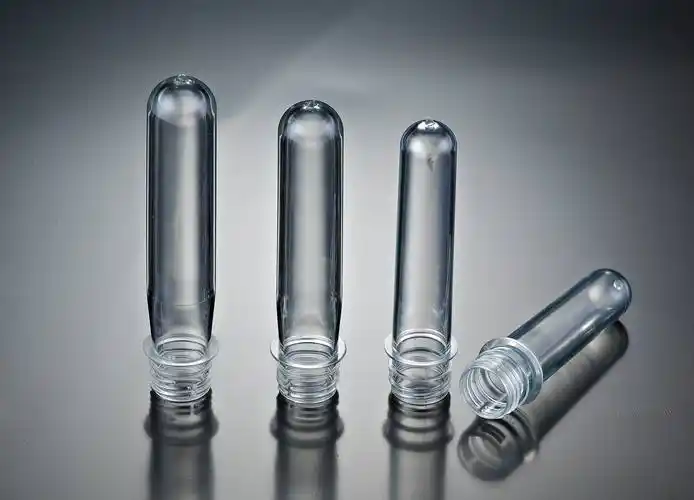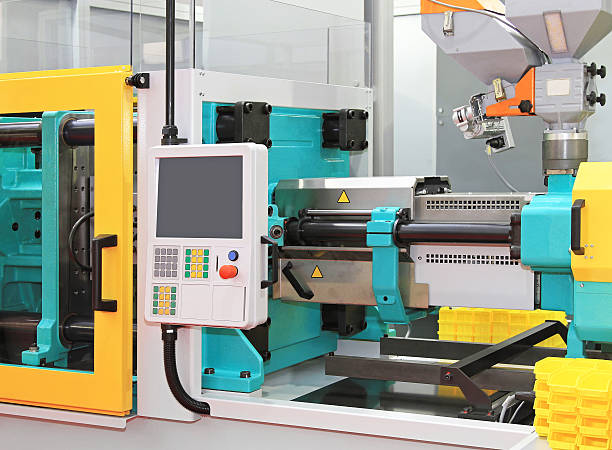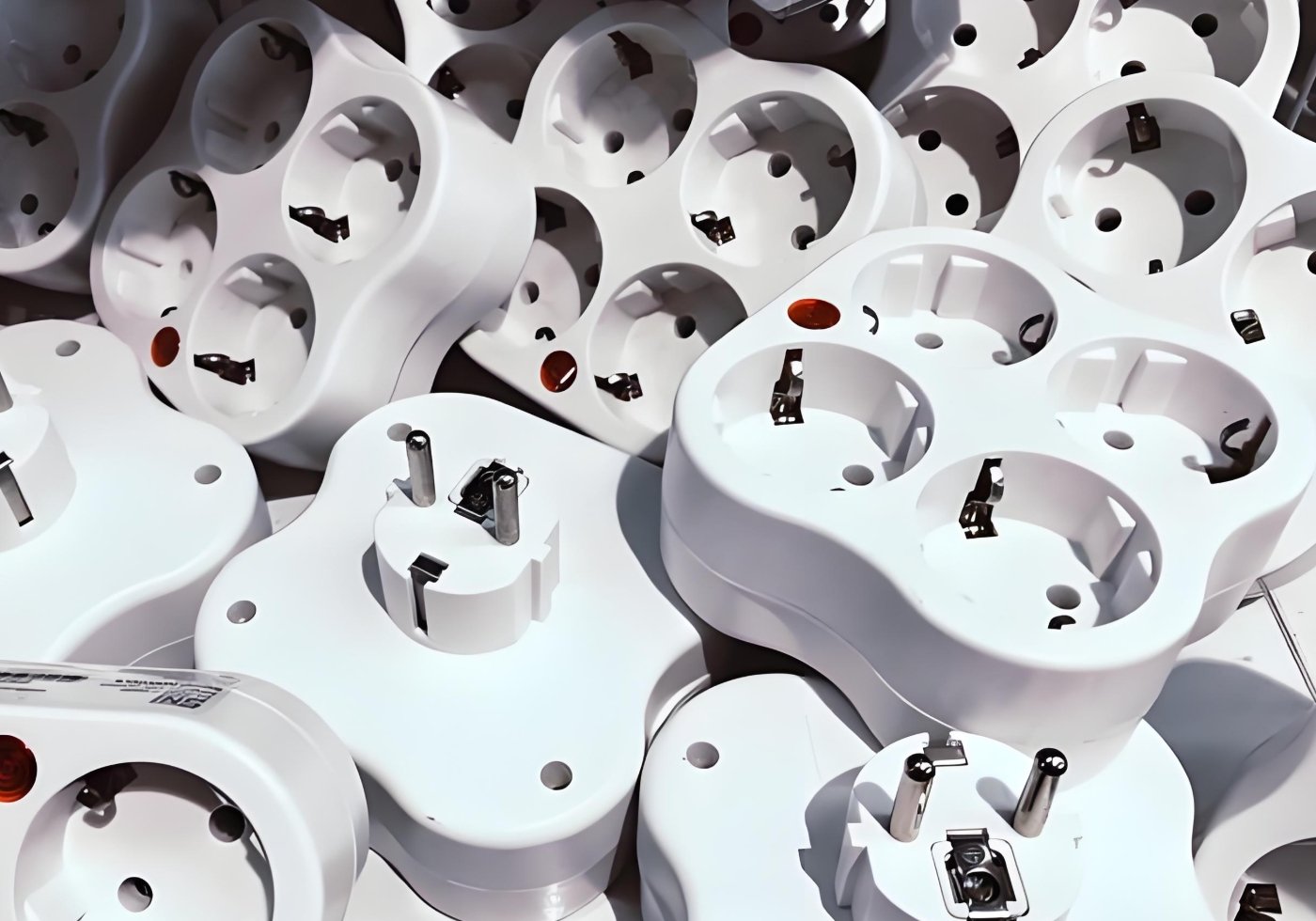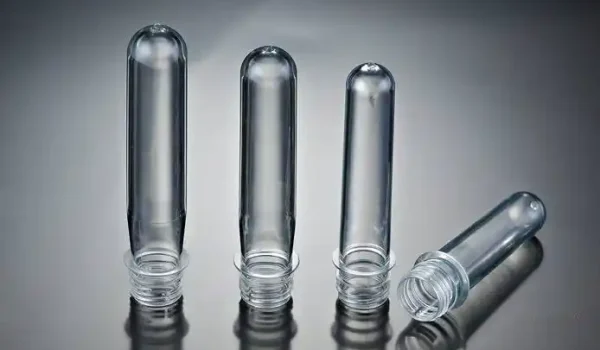Injection blow molding is a manufacturing process that produces high-precision, hollow plastic parts like bottles and containers. To be precise, it is a combination of injection molding and blow molding that delivers consistent results with minimal material waste.
This article will discuss how injection blow molding works, its various components, advantages, drawbacks, and applications. By reading it all, you’ll know why it’s a go-to solution for high-volume production and how your operations can benefit from it.
What is Injection Blow Molding (IBM)?
Injection blow molding is a three-step process. First, molten plastic is injected into a mold to create a preform. Then, the preform is blown into its final shape using compressed air. This method is ideal for producing small to medium-sized hollow products with tight tolerances and excellent surface finishes.

IBM is used to produce millions of plastic containers worldwide, ranging from 1 ml to 2 liters. Thanks to IBM’s precision, these containers have consistent volume, weight, and tolerance levels, making them ideal for multiple industries.
The Injection Blow Molding Process
The injection blow molding process involves three key steps.
Step 1: Injection Molding
You start by injecting molten plastic into a mold to make a preform. This preform has a basic shape and threaded neck of the final product.
Injection molding ensures that the neck and the threading of the bottle are formed accurately, which is crucial for applications like pharmaceutical packaging that require tight sealing.
Step 2: Blowing Stage
Next, the preform is transferred to a blow mold. Compressed air is injected, expanding the preform to its final shape. The blowing state ensures that the product achieves the desired wall thickness and dimensions.
The air pressure must be carefully controlled to avoid defects such as uneven thickness and weak spots. Since the preform already has a defined shape, IBM produces more consistent wall thickness than extrusion blow molding.
Step 3: Cooling and Ejection
Finally, the product is cooled and ejected from the mold. This step makes certain it retains its shape and dimensional accuracy.
Once the plastic hardens, the finished product is ejected from the mold. The cycle repeats, making IBM an efficient process for high-volume production.
Components of an Injection Blow Molding Machine
Understanding the key components of an injection blow molding machine helps you optimize production processes. Here’s the overview of these components:
Injection unit
The injection unit melts and injects the plastic into the mold. It includes a hopper, an injection screw, and a barrel. These three parts work together to melt and precisely inject the plastic material.
Blow mold
The blow mold shapes the final product. It is designed to withstand high temperatures and pressures. The design of the blow mold directly impacts the quality and consistency of the final product.
Air pressure system
The air pressure system supplies compressed air to expand the preform. Precise control in the air pressure system ensures uniform wall thickness in the final product.
Cooling system
Cooling channels within the mold solidify the product quickly, maintaining its shape. They circulate air or water within the mold to maintain proper temperature.

Advantages of Injection Blow Molding
IBM offers several advantages over other plastic molding processes, making it a preferred choice for many industries.
Produces lightweight, seamless, and uniform parts
Since IBM creates products from a preform, it ensures uniform wall thickness to reduce weak points and inconsistencies. The seamless design makes the final product lightweight yet strong.
High precision and consistency
IBM provides excellent dimensional accuracy, a characteristic that makes it ideal for industries requiring precise bottle shapes, like pharmaceuticals and cosmetics. The process minimizes variation and results in each product being identical.
Reduced material waste compared to traditional blow molding
Methods like extrusion blowing create excess materials from trimming. IBM is different, as it only uses the required amount of plastic-–it reduces waste and improves cost efficiency.
Ideal for high-volume production
IBM’s automated nature makes it highly efficient and suitable for mass production. Its ability to produce thousands of identical bottles or containers per hour is a cost-effective solution for large-scale manufacturing.
Disadvantages and Limitations
Despite its advantages, IBM has certain limitations that you must consider.
Higher initial equipment cost
Due to their complex design and precision components, injection blow molding machines are more expensive than traditional blow molding equipment. This higher initial investment can be an entry barrier for small manufacturers.
Limited to small and medium-sized hollow products
IBM is best suited for producing small and medium-sized containers. It cannot produce large follow-up products, as the process and equipment are not designed for high-volume expansion.
Complex tooling and maintenance requirements
IBM requires precise molds and tooling, which can be a time-consuming and expensive process. In addition, you need to perform regular maintenance to keep the machine running efficiently.
Applications of Injection Blow Molding
IBM is widely used across several industries due to its ability to produce high-quality and consistent plastic containers.
Pharmaceutical Packaging
Many pharmaceutical bottles and medicine containers are manufactured using IBM because of its precision, leak-proof design, and ability to meet stringent quality standards.
Cosmetic Industry
IBM is often used in manufacturing bottles for lotions, perfumes, and other cosmetic products where uniformity and aesthetic appeal are crucial.
Food and Beverage Industry
IBM is ideal for lightweight, durable bottles for syrups, juices, and dairy products. It ensures product safety and shelf stability.

Injection Molding vs. Injection Blow Molding
Many people confuse injection molding with injection blow molding, but there are considerable differences between them.
Injection molding creates solid plastic parts by injecting molten plastic into a mold. Common applications include plastic lids, containers, and automotive components.
On the other hand, injection blow molding creates hollow plastic products by first manufacturing a preform and then blowing it into the desired shape. It is mainly used to manufacture bottles and small containers.
Here is a tabular comparison to help you understand the differences even better.
| Feature | Injection Molding (IM) | Injection Blow Molding (IBM) |
| Purpose | Produces solid plastic parts | Produces follow plastic bottles and containers. |
| Process | Plastic is injected into a mold and left to cool. | A preform is created through injection molding and then blown into its final shape. |
| Common Materials | ABS, Polypropylene (PP), Polystyrene (PS), Nylon | PET, High-density Polyethylene (HDPE), Polypropylene (PP) |
| Applications | Lids, automotive parts, housings for electronics, containers | Bottled for pharmaceuticals, cosmetics, and food products |
| Material Efficiency | Some material is wasted due to runners and sprues | Minimal waste since the preform is used efficiently |
| Production Speed | Fast cycle times for solid parts | Slightly slower due to the blowing stage but still efficient for high-volume production |
| Equipment Cost | Lower than IBM due to simple machinery | Higher initial investment due to the complexity of the process |
| Size Limitations | Can create both small and large solid parts | Best suited for small to medium-sized hollow objects |
Final Thoughts
Injection blow molding is a highly efficient process for producing high-quality hollow plastic parts. If you are in industries like pharmaceuticals, aerospace, or industrial equipment, it is a reliable solution that creates lightweight and uniform products. By understanding the process, components, and benefits, you can make informed decisions about your production needs.
If you are looking for expert mold tooling, CNC machining, or molding services, we are always ready to help. Get in touch with Fecision and let us know when we can support your manufacturing process.




